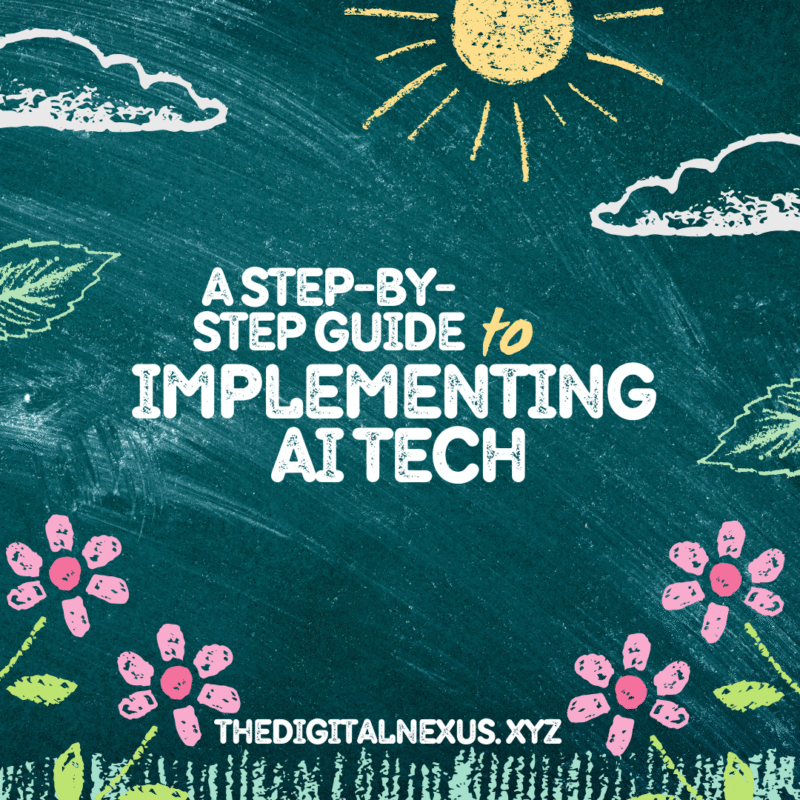Artificial intelligence has moved from the realm of science fiction to a practical, powerful tool that is reshaping industries. For IT beginners, developers, and tech professionals, understanding how to implement AI tech is no longer just an advantage—it’s becoming a core competency. The term “AI” can seem intimidating, but the process of integrating it into projects or workflows can be broken down into a clear, manageable series of steps.
This guide provides a foundational, step-by-step approach to implementing AI, whether you’re building a new application or enhancing an existing system. We will also provide a study roadmap to help you build the necessary skills from the ground up.
The 5-Step Implementation Framework
Successfully implementing AI tech is a strategic process that goes beyond just writing code. It involves careful planning, data management, and continuous refinement.
Step 1: Define the Problem and Goal
Before you touch any technology, you must clearly define what you want to achieve. What specific problem are you trying to solve? Vague goals like “use AI to improve sales” are less effective than specific ones like “use a machine learning model to predict customer churn with 85% accuracy.” A clear objective will guide your entire project.
Step 2: Gather and Prepare Your Data
Data is the lifeblood of most AI systems. The quality and quantity of your data will directly determine the performance of your model. This phase involves:
- Data Collection: Sourcing relevant data from databases, APIs, or public datasets.
- Data Cleaning: Handling missing values, removing duplicates, and correcting errors. This is often the most time-consuming part of the process but is critically important.
- Data Formatting: Structuring the data in a format that a machine learning model can understand.
Step 3: Choose the Right AI Model or Tool
Not all AI is the same. The model you choose depends entirely on the problem you defined in Step 1. Your options range from:
- Using Pre-built APIs: For common tasks like image recognition or language translation, services from Google Cloud AI or AWS offer powerful, ready-to-use models. This is often the fastest way to implement AI tech.
- Customizing Existing Models: Using techniques like transfer learning to adapt a pre-trained model (like GPT for text or ResNet for images) to your specific dataset.
- Building from Scratch: For highly unique problems, you may need to design and train your own model using libraries like TensorFlow or PyTorch. This requires the most expertise.
Step 4: Train, Test, and Validate the Model
Once you have your data and model, you enter the training phase. You will split your data into training and testing sets. The model “learns” from the training data, and you then evaluate its performance on the unseen testing data. This iterative process involves tuning parameters (hyperparameters) to improve accuracy and reliability.
Step 5: Deploy, Monitor, and Iterate
A successful model isn’t the end of the project. It needs to be deployed into a live environment where it can be used. After deployment, you must continuously monitor its performance to ensure it’s delivering the expected results. AI models can degrade over time as real-world data changes, a concept known as “model drift.” Regular retraining and updates are crucial. For more on deployment strategies, you can explore resources like this guide from IBM.
A Study Roadmap for Aspiring AI Implementers
Building the skills to implement AI tech is a marathon, not a sprint. Follow this roadmap to build a strong foundation.
Phase 1: The Core Fundamentals (Months 1-3)
- Master a Programming Language: Python is the undisputed king of AI. Focus on learning its syntax, data structures, and libraries like NumPy and Pandas.
- Learn the Math: Refresh your knowledge of Linear Algebra, Calculus, and Probability. These are the mathematical foundations of machine learning.
- Understand Core ML Concepts: Take an introductory course (like Andrew Ng’s famous Coursera course) to understand concepts like supervised vs. unsupervised learning, regression, and classification.
Phase 2: Practical Application (Months 4-6)
- Dive into a Framework: Choose either TensorFlow or PyTorch and work through tutorials to learn how to build and train models.
- Complete Guided Projects: Work on classic machine learning projects using public datasets (e.g., Titanic survival prediction, Iris species classification).
- Explore a Specialization: Start exploring a specific area of AI that interests you, such as Computer Vision, Natural Language Processing (NLP), or Reinforcement Learning.
Phase 3: Building and Deploying (Ongoing)
- Create a Portfolio Project: Find a unique dataset and build an end-to-end project, from data cleaning to model deployment. Document your process.
- Learn Cloud AI Platforms: Get familiar with the AI and ML services offered by AWS, Google Cloud, or Azure. This is essential for real-world deployment. Read our guide on cloud computing basics to get started.
- Stay Current: The field of AI moves incredibly fast. Follow leading researchers, read papers, and continuously experiment with new tools and techniques.
What are your biggest questions about implementing AI? Have you started your learning journey? Share this plan and your thoughts in the comments below!







